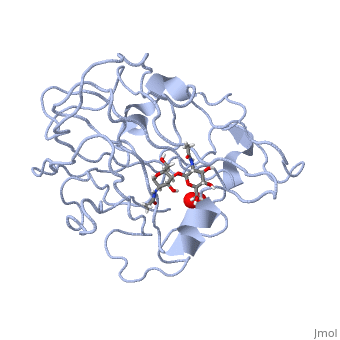Function
Monooxygenases (MO) catalyzes the incorporation of a hydroxyl group into a variety of substrates. MO catalyzes the reduction of O2 to H2O while oxidating NADPH.
- ActVA-Orf6 monooxygenase catalyses the oxidation of an aromatic intermediate of the actinorhodin pathway [1].
- Baeyer-Villigen monooxygenase is a bioanalytic tool which can catalyze reactions which are difficult to do via chemical means[2].
- TropB monooxygenase catalyses asymmetric oxidative dearomatization reactions [3].
- TetX monooxygenase inactivates the tetracycline antibiotic [4].
- Phenol 2-monooxygenase see Phenol hydroxylase (hebrew).
Peptidylglycine α-Hydroxylating Monooxygenase (PHM)-coordination of peroxide to CuM center. Structural and computational study [5]
In recent years there has been a significant interest in describing the interactions of copper-containing enzymes with O2/H2O2-derived species. The short-lived intermediates resulting from the activation of dioxygen are the key players in the mechanistic cycles in many metalloenzymes. In the enzyme various reduced Cu/oxygen species have been proposed to act as catalytically competent intermediates, yet their exact nature and their role in the enzymatic reaction is still unknown.
Structural and other studies showed that peptidylglycine α-hydroxylating monooxygenase (PHM) contains . CuM serves as an oxygen binding and hydrogen abstraction site, CuH is involved in electron transfer. In the structure of Cu(II)-PHM complexed with hydrogen peroxide determined to 1.98 Å resolution, . The Å. This Cu(II)-bound , forming . DFT and QM/MM calculations indicate that this species is a Cu-bound doubly deprotonated peroxidate and that its energy is similar to that of its isomer Cu(I)-bound superoxide.
3D structures of monooxygenase
Monooxygenase 3D structures

